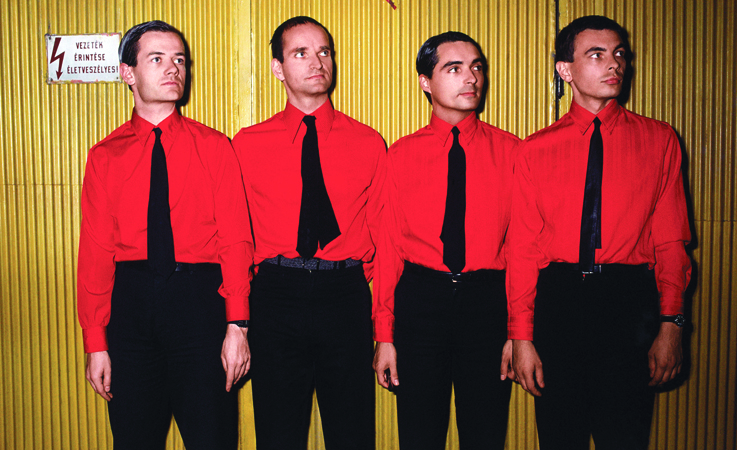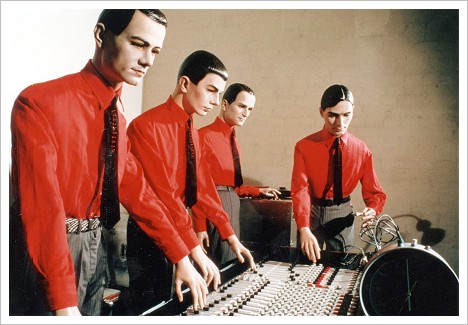
The finds at House Mouse Records used to be so much sweeter. Not that they aren’t sweet anymore, but there was a time when there was so much untapped territory in the huge warehouse full of vinyl. I remember I could always count on finding gold buried deep in the stacks and stacks of countless and random records.
My trips to House Mouse were always on the agenda for the weekend. The pile of the goods at the end of the day were always well worth the hours and hours of digging past the substantial amount of Christmas and Nat King Cole records. On one of my many adventures of rummaging through the sea of endless wax I found Kraftwerk’s 1978 masterpiece The Man-Machine for $5 on clear red vinyl. It was one of those good days.
The first record I found that day was a Rick James’ “Super Freak” single, that was also on red vinyl. I decided to ask the House Mouse owner Pat how much she would sell the record for. Pat replied with, “Oh no, I don’t sell the colored ones.”
So I put the record back and continued searching the place, as Julio Iglesias blasted in the in house stereo. Then I came across the Kraftwerk record and to my surprise, the vinyl was also colored. It was a nice clear red that looked like a giant piece of candy. I wanted to bite it, but I didn’t.
I put the record back in the sleeve and crossed my fingers that maybe she could sell me the record. I stashed it somewhere in-between the rest of the other records I had picked out that day and handed them over to her so she can give me a price on each of the records.
As she was going through each one and taking the records out of the sleeve to look at the vinyl itself, I began to panic. I started to think of things to tell her to show her I really wanted it. Pat had a hard time getting the record out of the sleeve and just decided to sell it to me anyway. Peace out!
 The Man-Machine came out in May of 1978 and is Kraftwerk’s 7th studio album recorded at the bands own Kling Klang studios. The famous album cover adorned in black, white and red was inspired by Russian artist El Lissitzky and the Suprematism movement. By this time German electro pioneers Kraftwerk have already mastered krautrock and were paving the way for the synth-driven 80s with their futuristic sound.
The Man-Machine came out in May of 1978 and is Kraftwerk’s 7th studio album recorded at the bands own Kling Klang studios. The famous album cover adorned in black, white and red was inspired by Russian artist El Lissitzky and the Suprematism movement. By this time German electro pioneers Kraftwerk have already mastered krautrock and were paving the way for the synth-driven 80s with their futuristic sound.
Was The Man-Machine ahead of its time or was it right on time? Without this record, it’s hard to see bands like Depeche Mode, A Guy Called Gerald or New Order ever coming to life. The album still has touches of the experimental beginnings of Kraftwerk, but the stoner long hair is way gone, and the band now are integrating more electronic arrangements.
The mechanical approach and science fiction templates sees Kraftwerk immersed in this futuristic world seen visually in such films as Metropolis from 1927. The 6 minute opener “The Robots” is a proper introduction to the sound consistent on the entire album with the focus centered primarily on drum beats and synthesizers.
The sexy sophisticated sounds of “The Model” steers the listener on over to the dance floor where its infectious beats elevate the experience. Unlike many of Kraftwerk’s musical peers of the 70s, you won’t find any guitar solos or exaggerated vocal straining. The album is a modest and minimal piece of music perfection.
The Man-Machine is like the Rolling Stones’ album Sticky Fingers—an album stuck in the middle of an era of the band’s peak moments of creativity. Integrating computer technology with danceable beats, Kraftwerk were giving birth to electronic music along with early pioneers of the same robot blood The Silver Apples and Bruce Haack. With a simple and minimal approach, these primitive stages of electronic music would lay the groundwork for the future of music itself.

